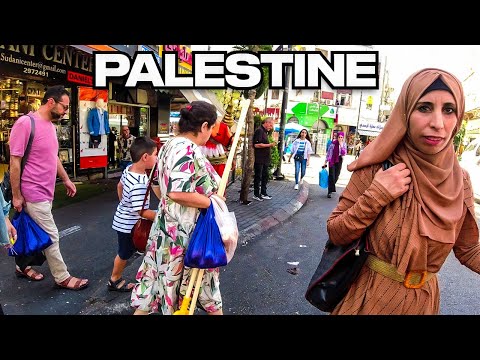
Nestled in the heart of the Middle East, the Palestinian Territories, comprising the West Bank and Gaza Strip, are lands rich in history, culture, and stories of resilience. A walk through these territories reveals a tapestry of ancient traditions and modern struggles, set against a backdrop of both historic sites and contemporary challenges. This journey through the streets of cities like Ramallah, Bethlehem, Hebron, and parts of East Jerusalem provides an intimate glimpse into the daily lives and vibrant spirit of Palestinian people.
#### Historical Context
The Palestinian Territories have been at the crossroads of cultures, empires, and religions throughout history. This region is famously known as part of the ancient biblical landscape—home to prophets and pivotal to many religious tales. Over centuries, control over this area has passed through numerous hands including Romans, Byzantines, Ottomans, and most recently was under British mandate until mid-20th century developments led to complex political strife with Israel.
#### Cultural Vibrance Amid Conflict
Walking through these streets offers a unique perspective on Palestinian everyday life that goes beyond headlines. Each city has its distinct flavor; Ramallah serves as a political and cultural hub with bustling markets and modern art galleries that showcase progressive Arab artists. In contrast, Bethlehem’s skyline is dominated by the historic Church of Nativity where pilgrims gather from around the world.
Hebron features a vibrant Old City market alongside significant religious sites like the Tomb of Patriarchs but is also a focal point for tensions due to its divided control between Palestinians and Israelis. Meanwhile Gaza—often in news for its dire humanitarian situations due to blockades—pulses with an indefatigable spirit seen in its graffiti walls depicting symbols of hope and resistance.
#### The Experience on Ground
The sensory experience while walking these streets can be profound; aromas from street food vendors selling falafel or knafeh mix with sounds ranging from prayer calls from minarets to lively debates at coffee shops. Conversations often reveal deep connections to land manifesting in poetry or music—a significant part of Palestinian cultural expression.
Local hospitality shines despite hardships; guests are routinely invited for tea or meals echoing traditional Bedouin values rooted in generosity. Such interactions present opportunities to understand local narratives firsthand—challenges surrounding mobility restrictions due to checkpoints or impact on communities by separation barriers become palpable stories rather than distant news items.
#### Socio-Economic Dimensions
The economic scenario varies widely within different areas; while some regions show signs of development with new construction projects (often fueled by international aid), others struggle under economic stagnation exacerbated by political instability. Unemployment rates tend particularly high among youth leading many towards creative entrepreneurship attempts or roles in social activism as outlets for expression as well as survival.
#### Importance Through Tourism
Tourism holds importance economically but also politically as it represents recognition and understanding from international visitors. Tourists contribute directly to local economies especially when engaging with small-scale enterprises such as family-run souvenir shops or guided tours emphasizing historical context alongside personal stories shared by guides adding depth to heritage site visits like those at Jericho or Qalqilya zoo—the only animal sanctuary managed under such complex conditions.
#### Conclusion
A walk through the streets of Palestinian Territories uncovers layers not just historical but deeply human—their dreams preserved amidst ruins or newly painted murals advocating peace tell tales waiting attention beyond conflict-driven perceptions commonly portrayed globally. For those who venture here respectfully seeking insights rather than mere sightseeing will find enriched understanding bridging divides through shared human experiences found universally impactful across civilizations throughout time.
